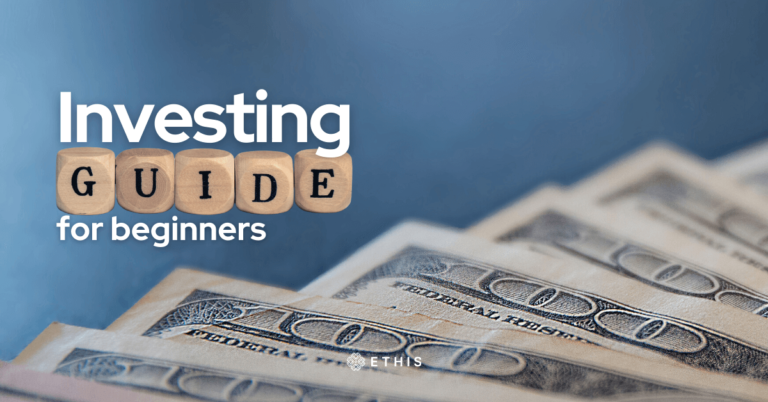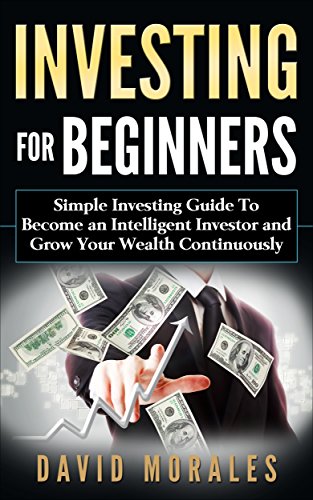Investing is the strategic allocation of money to gain profits over time. Beginners should start with a clear understanding of their financial goals and risk tolerance.
Embarking on the journey of investing can seem daunting for newcomers, as the financial world is replete with options and associated jargons. Yet, grasping the basics is crucial for anyone aiming to grow their wealth through the investment landscape. An ideal introduction includes setting a budget, getting to grips with the basics of the stock market, bonds, mutual funds, and ETFs, and understanding the importance of a diversified portfolio.
It is vital to learn about the impact of market volatility and the role of compound interest in growing investments. Making informed decisions and avoiding common pitfalls requires education, patience, and a level-headed approach. Aspirant investors should also recognize the significance of long-term planning and the difference between investing and speculation to lay a solid foundation for their investment journey.

Credit: ethis.co
The Appeal Of Investing
Investing can seem like a thrilling ride for many. It’s a journey that leads to building wealth and securing one’s future. The key draw is the opportunity to grow money over time. Many wonder if it’s worth the leap. Let’s explore the reasons behind why more and more people are taking the investment plunge.
The allure of the investing world catches the eye of beginners for many reasons. It’s not just about making quick money; it’s a step toward long-term financial health. With investing, your money works for you, potentially multiplying as years go by.
Why Start Investing Early
- Maximize compounding: Starting early can lead to a bigger nest egg, thanks to compound interest.
- Learn through experience: Early investors gain valuable knowledge that shapes smarter money moves.
- Embrace market cycles: More time in the market means riding out downs and capitalizing on ups.
Potential Financial Rewards
| Investment Type | Potential Reward |
|---|---|
| Stocks | Price appreciation and dividends |
| Bonds | Regular interest payments |
| Real Estate | Rental income and value increase |
| Mutual Funds | Diversification and professional management |
Growing wealth is a primary goal of investing. The right choices can lead to financial rewards like income streams, appreciation, and security. Beginners should aim to understand these rewards. With knowledge and patience, anyone can start to see the fruits of their investment decisions.

Credit: www.amazon.com
Setting Your Investment Goals
Before diving into investing, it’s crucial to set clear goals. Understanding what you want to achieve helps guide your decisions. Let’s delve into how to define investment objectives that align with your future plans.
Short-term Vs. Long-term Objectives
Knowing when you’ll need your funds shapes your investment strategy. Short-term goals often involve saving for a vacation, an emergency fund, or a down payment on a house. These usually require accessing money within a few years. For short-term goals, options like high-yield savings accounts or certificates of deposit can be suitable.
- High-Yield Savings Account: Good for liquidity and low risk.
- Certificates of Deposit (CDs): Higher interest than regular savings, with a fixed term.
Long-term goals focus on the distant future, like retirement or your child’s education. Stocks, bonds, mutual funds, and ETFs are common choices for the long haul.
- Stocks: Offers growth potential over many years.
- Bonds: Can provide steady income with less risk than stocks.
- Mutual Funds and ETFs: Diversify investments to spread risk.
Risk Tolerance And Personal Comfort
Your comfort level with risk impacts your investment choices. Risk tolerance is the degree of variability in investment returns that you are willing to withstand. You need to assess how much market ups and downs you can handle without losing sleep.
| Risk Level | Investment Type |
|---|---|
| Low Risk | Savings accounts, CDs, government bonds |
| Moderate Risk | Mixed-asset funds, higher-grade corporate bonds |
| High Risk | Stocks, high-yield bonds, sector-specific ETFs |
Finding a balance between risk and potential returns is key. Younger investors might take on more risk for greater returns due to a longer timeline. As you get closer to your financial goals, you might shift to more conservative investments to protect your funds.
Understanding Different Types Of Investments
When you start investing, it’s like entering a world with its own language. Don’t worry. Broken down simply, there are some basic categories every investor should know. These different investment types can help diversify your portfolio. They each play a unique role in your financial success. Let’s explore the basics: stocks, bonds, mutual funds, real estate, and commodities.
Stocks
Imagine owning a tiny slice of a big company. That’s what stocks are. They represent ownership in a corporation. A stock’s value can go up or down depending on how the company performs and other market factors.
- Individual Stocks: Buy a single company’s stock.
- Stock Market Indexes: Track the performance of a group of stocks.
Bonds
Bonds are like loans you give to governments or companies. In return, you get interest payments at fixed intervals. When the bond matures, you get your original investment back. They’re often seen as safer than stocks but with lower potential returns.
| Type of Bond | Characteristics |
|---|---|
| Government Bonds | Lower risk, stable returns. |
| Corporate Bonds | Higher risk, higher potential returns. |
Mutual Funds
Mutual funds bundle stocks, bonds, and other assets. When you invest in a mutual fund, you buy shares of this bundle. This way, with a single purchase, you can own a piece of many investments. It’s managed by professionals who make the buying and selling decisions.
Real Estate And Commodities
Real estate involves buying property to rent out or sell for profit. Commodities include physical goods like gold, oil, or crops. Investing in real estate or commodities can help balance your portfolio, as their market movements are often different from stocks and bonds.
- Real Estate Trusts (REITs): Easier than buying property directly.
- Commodities Futures: Contracts to buy or sell at future prices.
Getting Started With Investing
Investing might seem complex, but it starts with simple steps. Anyone can turn savings into growth. Starting now means more potential gains. Let’s jump into the essentials for new investors.
Opening An Investment Account
Before making investments, you need an account. Think of it as a launchpad for your money to grow. Opening one is easy:
- Choose a reputable broker or financial institution.
- Fill out the application form online or in-person.
- Provide necessary identification for security.
- Deposit funds and you’re ready to invest.
Always read the terms. This ensures you understand fees and account features. Pick an account type that fits your goals, like a tax-advantaged retirement account or a standard brokerage account.
Choosing The Right Investment Platform
Selecting where to invest is crucial. The right platform can shape your investing experience. To decide, consider the following points:
| Feature | Importance |
|---|---|
| User Experience | Easy navigation leads to better decisions. |
| Fees | Lower fees mean more money to invest. |
| Investment Options | Diversity can protect and grow your money. |
| Education Resources | Learning helps you invest smarter. |
| Customer Support | Good support can ease your investing journey. |
Do your homework. Compare platforms using reviews and ratings. A demo account can help you test the waters. Make sure to pick a platform that aligns with your investment strategy and long-term goals.
Developing A Strategy
When taking the first steps into investing, strategy is everything. A well-crafted strategy acts as your roadmap. It helps you navigate the investing landscape with clear goals. Let’s dive into the crucial parts of developing a strategy that works for you.
The Importance Of Diversification
Putting all your eggs in one basket is risky. Diversification means spreading your investments across various asset classes. Let’s break down why this matters:
- Reduces Risk: If one investment fails, others can balance it out.
- Better Returns: Combining different assets can increase your chances of a favorable return.
- Market Fluctuations: Different investments react uniquely to market changes.
Continuous Learning And Staying Informed
Investing is a journey with constant learning. Staying informed is key. Follow these tips:
- Read financial news daily.
- Follow markets and trends.
- Use apps to track your portfolio performance.
- Read books by investing professionals.
Knowledge is power. More information leads to smarter investing decisions.

Credit: visual.ly
Common Mistakes To Avoid
Investing might seem tough at first, with lots of paths to choose. Smart moves save money while mistakes can be costly. Knowing what to dodge is as crucial as knowing where to step. Let’s explore some typical blunders most newcomers make.
Emotional Decision Making
Keeping cool heads is key in investing. Here’s why:
- Excitement can lead to risky bets.
- Fear might trigger early sell-offs.
- Patience usually wins in this game.
Advice? Stick to the plan you made when calm.
Neglecting Fees And Tax Implications
Fees and taxes reduce your profits. Here’s how:
| Type | How It Hits |
|---|---|
| Trading fees | Eat into buy and sell gains |
| Management fees | A nibble from your investment |
| Taxes | Profit cut at sell time |
Double-check these details before trading.
Frequently Asked Questions For Investing Guide For Beginners
How Should A Beginner Start Investing?
Begin with setting clear investment goals. Educate yourself on the basics of investing. Start small with an affordable sum. Diversify your investment portfolio. Regularly review and adjust your investments.
How Much Money Do I Need To Invest To Make $1000 A Month?
The amount you need to invest to make $1000 a month varies. It depends on the investment’s return rate. For example, with a 5% annual return, you’d need to invest $240,000.
Which Type Of Investment Is Best For Beginners?
Index funds or mutual funds are often recommended for beginners due to their diversified portfolios and lower risk levels. Investing through a robo-advisor can also be a good starting option, offering automated, tailored advice at a lower cost.
Is $200 Enough To Start Investing?
Yes, $200 is enough to start investing in various assets like stocks, ETFs, or micro-investing platforms, which can suit small budgets. Always consider the risks and do research before investing.
Conclusion
Embarking on your investment journey can be both exciting and daunting. By embracing the basics and building a solid foundation, you set the stage for future financial success. Remember, starting small and staying consistent are key. Let this guide be your first step towards growing your wealth with confidence and clarity.
Happy investing!




